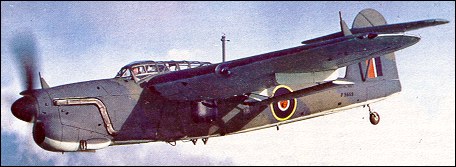 |
Fairey Barracuda1940 |  |
| TORPEDO- AND DIVE BOMBER | Virtual Aircraft Museum / United Kingdom / Fairey |
 |
The Barracuda was the first monoplane torpedo bomber to go into service with the FAA. The original S.24/37 was designed round the Rolls-Royce Exe 24-cylinder X-type engine. Early in the construction stage the power plant was changed to the Rolls-Royce Merlin 30, an engine with many entirely different characteristics. The delay this caused was responsible for retarding the initial production programme. The Merlin-engined prototype first flew on 7 December 1940. The first prototype Barracuda had an unbraced tailplane in line with the top of the fuselage. During the early trials it was found that when the flaps were in the diving position the disturbed air caused serious tail flutter. To overcome this the tailplane of the second prototype was raised some 1.22m to clear the wake from the flaps and also to clear the folding wings. The first trials with the repositioned tail unit were made in July 1941 and showed that the trouble had been entirely eliminated. The Barracuda was first used operationally in September 1941 in raids from HMS Victorious on Kirkenes in northern Norway and on Petsamo in Finland. In 1942 Barracudas took part in sweeps over French ports and in the invasion of Madagascar. The first major action in which Barracuda squadrons took part was the successful bombing attack on the German battleship Tirpitz in Alten Fiord, north Norway on 3 April 1944. It was in action against the Japanese for the first time in an attack on enemy installations at Sabang, on the island of Sumatra on 19 April 1944. Production of the Barracuda ended in 1946, by which time more than 2,500 had been built: as the Barracuda I with a Merlin 30 engine; Barracuda II with a 1,222kW Merlin 32 engine; Barracuda III, similar to the Mk II but with ASV 10 radar equipment in a bulge under the fuselage; and Barracuda V (first flown in June 1945) with a Rolls-Royce Griffon VII engine driving a Rotol four-bladed propeller, increased wing span, larger rudder and fin, generally strengthened structure, no rear armament but one 12.7mm forward-firing machine-gun.
|  COMPANY PROFILE | |||||||||||||||||||||||||||||||||||||||||||||||||||||||||||||||
 |

|

